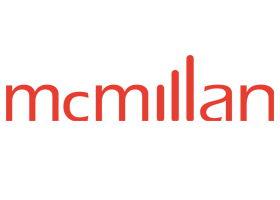


Purchasing Your Next Piece of Property With an iPad May Have Just Become a Reality
Purchasing Your Next Piece of Property With an iPad May Have Just Become a Reality
As of July 1, 2015, Ontario’s Electronic Commerce Act[1] (“Act“) permits agreements of purchase and sale and other documents that create or transfer an interest in land (“Agreements“) to be signed electronically[2], and to satisfy the requirements of the Statute of Frauds.[3]
The Act is technology neutral. It does not impose any requirements concerning the adoption, association or reliability of an electronic document or electronic signature.[4] Parties are free to chose whether to use electronic documents and electronic signatures[5] and to adopt the technologies and processes best suited to their needs and concerns.
What is an Electronic Signature?
The Act defines an electronic signature as “electronic information that a person creates in order to sign a document and that is in, attached to, or associated with the document.”[6] The Act however, does not specify what is required for a person to (i) adopt an electronic signature, or (ii) how it is to be “attached or associated” with a document. Therefore, electronic signatures may take many forms, from a PDF of a person’s written signature that is pasted to an electronic document, or a symbol or alphanumeric code that is mathematically or functionally attached to a particular document (such as a digital signature).[7]
The Risk of Fraud
The move to electronic commerce, and the use of technological platforms the manage electronic documents and facilitate the use of electronic signatures, does not take away from the risk of fraud. Rather, new fraud risks may arise even though other risks associated with the use of paper documents may be minimised. The Act leaves it open to parties to determine whether it is advisable or feasible to use electronic documents and electronic signatures. A large variety of software products are available to facilitate the use of electronic signatures and provide a means of creating unique digital signatures, of associating digital signatures with documents and providing a means to audit the security of these documents.
The Act does not take away from the need for real estate agents and lawyers involved in a transaction to reliably establish the identity of the person signing the Agreement. The requirements of the Act do not replace existing laws, such as various “Know Your Client” requirements or FINTRAC rules, which require persons involved in a real estate transaction, such as lawyers, real estate agents, or banks to otherwise confirm the identity of a purchaser.
The Adoption and Association of an Electronic Signature
Beyond just confirming the purchaser’s identity, it may also be prudent for lawyers and real estate agents to develop an electronic signature that is unique to the person signing the document and implement a system that can reliably associate that signature to the transactional document.
In order to prove whether an electronic signature is unique to a particular individual, or is attached to a particular document, the party must be able to demonstrate that the technology used to perform said function is secure and effective.
Digital signature technology is one such tool. A digital signature is a kind of electronic signature whereby a computer creates a unique identifier through the application of encryption or encoding.[8] Digital signatures ensure the identification of a specific signor, that the signature is attached to or associated with a specific document, and that the document has not been tampered with.[9] In fact, Ontario’s electronic land registration system already relies on digital signatures.[10] Also, PIPEDA’s Secure Electronic Signatures Regulations require a digital signature in order for an electronic signature to be enforceable.[11]
Conclusion
Members of the legal profession acknowledge that electronic handling of Agreements may be an easier and more efficient process. However, this change brings with it fears of fraudulent activity.[12] However, the risk of fraudulent activity is not new to real estate transactions. As in the paper world, the challenge of minimizing fraud in relation to electronic signatures is met by the lawyer, employing appropriate processes, and technologies to eliminate the risk of fraud as much as possible. The diligence of the real estate practitioners is the key defence against fraud. As a result, electronic signatures are not necessarily inherently more vulnerable to fraudulent transactors.[13] Drawing on established tools and methods, real estate practitioners can construct a system of processes and technologies that ensure electronic signatures are reliable, and that parties are protected from fraudulent transactions.
by Ciaron Czajkowski and Jeremy Rankin, Student-at-Law
[2] Subsection 31(4) of the Act, which specifically exempted “documents, including agreements of purchase and sale, that create or transfer interests in land and require registration to be effective against third parties.” Section 31(4) was repealed in 2013 amendments to the Act, and came into force on July 1, 2015.
[3] See s. 5 of the Electronic Commerce Act, 2000, SO 2000, c 17, s. 5
[4] While the Act does contemplate that regulations may prescribe certain documents or classes of documents which will be required to have higher threshold reliability and association of the signature to a document to be effective, no such regulations have been made, nor are such regulations currently contemplated.
[5] Electronic Commerce Act, 2000 SO 2000 c 17, s. 3.
[6] Electronic Commerce Act, 2000 so 2000 c 17, s. 1; Mark J Selick, “E-Contract Issues and Opportunities for the Commercial Lawyer” (2001) Banking and Finance Law Review 16 BFLR 1 at pg 19.
[7] Mark J Selick, “E-Contract Issues and Opportunities for the Commercial Lawyer” (2001) Banking and Finance Law Review 16 BFLR 1 at pg 19; George S Takach, Computer Law (Toronto: Irwin Law, 1998) at pg 553.
[8] Mark Lewis, “Digital Signatures: Meeting the Traditional Requirements Electronically – A Canadian Perspective” 2 Asper Rev Int’l Bus & Trade L 63 (2002) at pg 69.
[9] Mark Lewis, “Digital Signatures: Meeting the Traditional Requirements Electronically – A Canadian Perspective” 2 Asper Rev Int’l Bus & Trade L 63 (2002) at pg 69.
[10] Marg Bruineman, “Signing on the dotted line easy as 1-2 in the digital world” (Canadian Lawyer Magazine: 2013) at pg 3.
[11] Charles Morgan & Julien Saulgrain, “E-mail Law”, (LexisNexis: Information Technology Law, 2008) at pg 32.
[12] Glenn Kauth, “Ontario looking at electronic signatures for real estate deals” (Canadian Lawyer Magazine: Nov 2014) at pg 1.
[13] Ray Leclair and Maurizio Romanin, “E-Signatures and Agreements of Purchase and Sale: An Update” (Ontario Bar Association, 2013) at page 1.
A Cautionary Note
The foregoing provides only an overview and does not constitute legal advice. Readers are cautioned against making any decisions based on this material alone. Rather, specific legal advice should be obtained.
© McMillan LLP 2016
Insights (5 Posts)View More
Introducing Bill 185, the Cutting Red Tape to Build More Homes Act, and an Update on the New Provincial Planning Statement
On April 10, 2024, Ontario’s provincial government introduced new legislation in its quest to “cut red tape”, speed up government processes, and meet its goal.
Consumer-Driven Banking is (almost) Here! Highlights from Budget 2024
On April 16, the Government of Canada released its 2024 budget which includes the promise of new legislation this spring to implement open banking in Canada.
Ontario Employers Beware: Common Termination Language Held Unenforceable
Ontario's Superior Court of Justice found that a termination clause was unenforceable because it gave the employer discretion to terminate "at any time".
Warning For Businesses: Companies Can be Liable for Tort of Bribery Even if They Did Not Intend to Pay or Receive a Bribe
Businesses with a duty to provide impartial advice must take steps to ensure the payments they make or receive are not later interpreted as bribes.
Storm Clouds Looming: The Impact of Competition Act Changes on Leasing
The Affordable Housing and Groceries Act (Bill C-56) recently introduced changes to the Competition Act (Canada) which will govern all landlord and tenant leases and other agreements, not just those of grocery stores
Get updates delivered right to your inbox. You can unsubscribe at any time.






